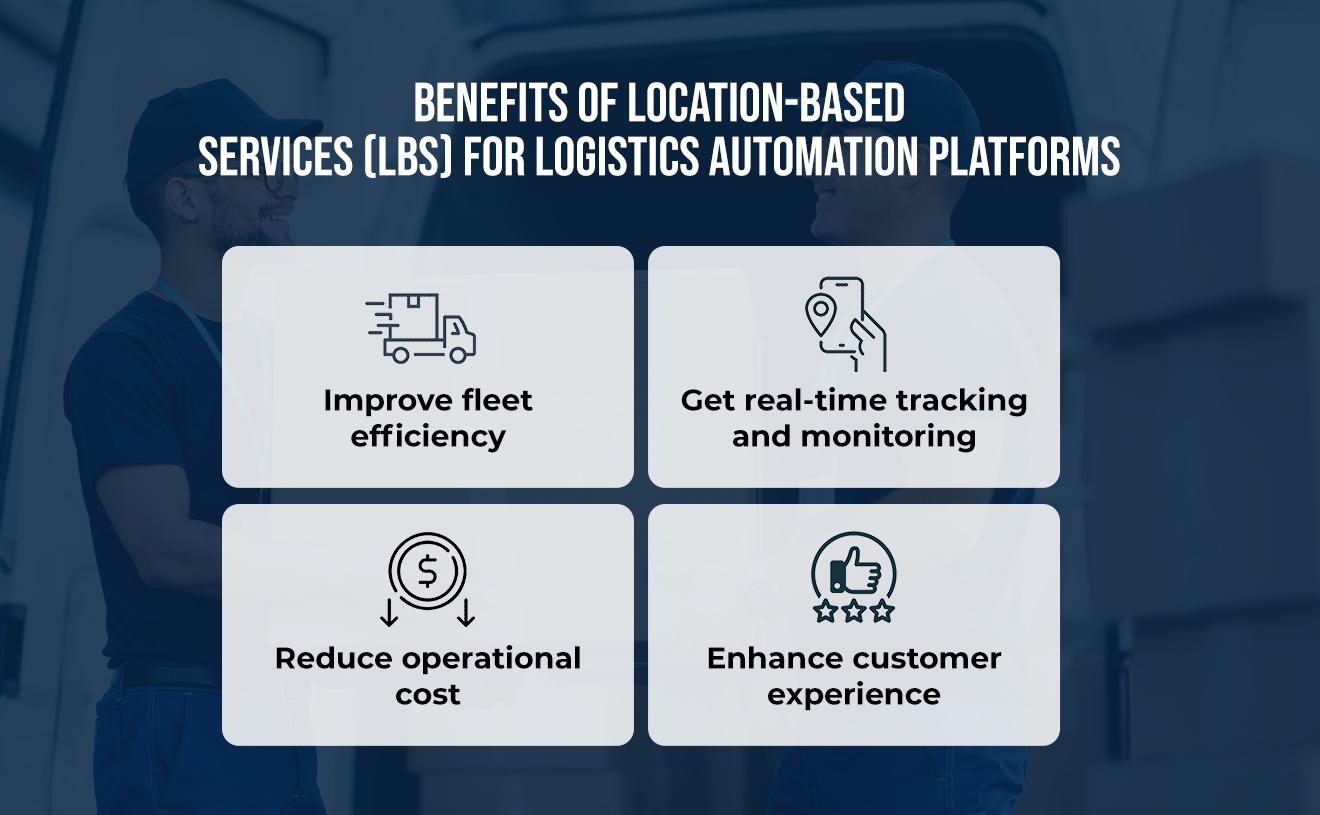
Location-Based Services and Logistics Solutions: Revolutionizing Supply Chain Operations
- -The Location-Based Service (LBS) is expected to have a CAGR of 22.51% for the period between 2019-27 [1]
- -The LBS suite offers multiple features that include mapping, navigation, real-time tracking, asset tracking, etc.
- -Logistics solutions for automating the industry are expected to reach $147.4 billion by 2030, growing at a CAGR of 11.9% between 2021-30. [2]
In today’s fast-paced world, one of the major challenges that logistics companies face is efficiently managing their operations. Timely delivery of goods is the other factor that can be greatly affected by a lack of visibility in the supply chain. With the rise of location-based services (LBS), and numerous logistics solutions available out there, best logistics management software are enhancing their game, providing real-time tracking and monitoring capabilities for their deliveries.
Location-Based Services (LBS) and Logistics Solutions are two innovative technologies. This has helped logistics companies manage and optimize their supply chain operations. Let’s deep dive into how a logistics company can benefit from combining the usage of location-based services and logistics solutions.
What are Location-Based Services (LBS)?
Location-based services are applications that will provide the operations team with information, services, or resources based on the real-time location. LBS relies on technologies such as GPS, Wi-Fi, and cellular networks to determine a device’s location. This can then be used to provide location-based information and services. In logistics, LBS are generally used to track shipments, vehicles (fleet), and other assets, offering real-time visibility into the supply chain.
Benefits of LBS for Logistics Automation Platforms:
- -Get real-time tracking and monitoring: With LBS, logistics companies can track the location of their shipments in real-time, providing accurate and up-to-date information on the status of their deliveries. Logistics managers can then identify any potential issues in their operations and take corrective action before they escalate.
- -Help improve fleet efficiency: LBS can help logistics companies improve their fleet efficiency by providing real-time data on the fleet. This allows logistics managers to optimize their supply chain operations, reduce delivery delays, and improve overall delivery times.
- -Reduce operational cost: By improving supply chain efficiency, logistics companies can save costs by reducing the time and resources required to manage their operations. Additionally, LBS can help logistics companies avoid costly delays. It improves their ability to meet customer demands, for maximum customer satisfaction.
- -Enhance customer experience: With LBS, logistics companies can provide their customers with real-time information on the status of their deliveries, improving overall transparency and real-time communication. This leads to improved customer satisfaction and loyalty.

Logistics solutions offered by logistics automation platforms to streamline supply chain operations
Warehouse Management Systems (WMS)
Warehouse Management Systems (WMS) are software solutions that help the logistics sector manage and optimize its warehouse operations. WMS solutions provide real-time visibility into inventory levels, warehouse layouts, and order processing, allowing logistics managers. This allows making informed decisions on how to optimize their warehouse operations. WMS solutions help automate numerous warehouse processes, such as picking and packing, reducing human errors and increasing operational efficiency.
Transportation Management Systems (TMS)
Transportation Management Systems (TMS) are software solutions that help logistics companies manage their transportation operations right from carrier selection, routing, and tracking to offering proof of delivery. Best transportation management software can help logistics managers optimize their transportation operations, reduce costs, and improve on-time delivery rates.
Order Management Systems (OMS)
Order Management Systems (OMS) are software solutions that help the logistics sector manage its order-processing operations. OMS solutions provide real-time visibility into order status, inventory levels, and fulfillment processes, allowing logistics managers to quickly identify and address any issues that may arise especially during festive sales and flash sales. OMS solutions help automate many order processing tasks, such as order entry and invoicing, reducing errors and increasing efficiency.
Inventory Management Systems (IMS)
Inventory Management Systems (IMS) are software solutions that help logistics companies manage their inventory levels and optimize their inventory processes. IMS solutions provide real-time visibility into inventory levels, stock movements, and order processing. This allows logistics managers to make informed decisions on how to optimize their inventory operations.

The combination of Location-Based Services and Logistics Solutions can greatly benefit logistics automation platforms. It allows improving efficiency and reducing costs in supply chain operations. Warehouse Management Systems, Transportation Management Systems, Order Management Systems, Inventory Management Systems, and Supply Chain Visibility software can help logistics companies optimize their operations, reduce costs, and improve customer service. LogiNext provides customers with real-time visibility, efficient routing, asset tracking, and improved customer service, so they can stay competitive and efficient in their logistics operations.
171 1







Pingback: LogiNext-Blog | Your Modern Guide To Supply Chain Management